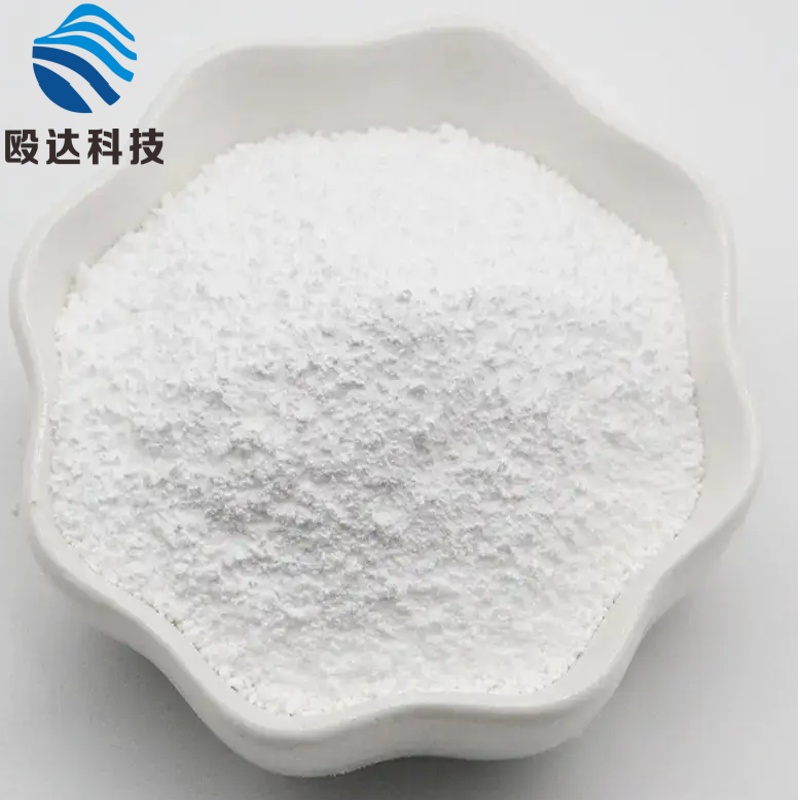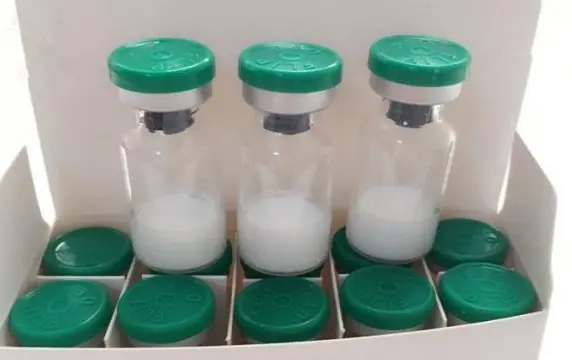-
Categories
-
Pharmaceutical Intermediates
-
Active Pharmaceutical Ingredients
-
Food Additives
- Industrial Coatings
- Agrochemicals
- Dyes and Pigments
- Surfactant
- Flavors and Fragrances
- Chemical Reagents
- Catalyst and Auxiliary
- Natural Products
- Inorganic Chemistry
-
Organic Chemistry
-
Biochemical Engineering
- Analytical Chemistry
- Cosmetic Ingredient
-
Pharmaceutical Intermediates
Promotion
ECHEMI Mall
Wholesale
Weekly Price
Exhibition
News
-
Trade Service
Phalloidin-TRITC is a red-orange fluorescent cytoskeletal stain that binds to and labels F-actin (excitation/emission maximum λ~540/565 nm).
It is recommended to dissolve the contents of the vial in 1.
5 ml of methanol or dimethyl sulfoxide to make a stock solution
of the product.
Product Name: Rhodamine labeled ghost pen ring peptide | TRITC Phalloidin Molecular Formula: C60H70N12O13S2 Molecular Weight: 1231.
4CAS: 915013-10-4 Structural Formula: Transport and Preservation Method: Ice Pack Transport
.
-20 °C protected from light and dry storage, effective
for 1 year.
Required: 1) (optional) Methanol 2) 1×PBS Buffer, pH 7.
4, Cell Culture Level 3) Fixative 4% Paraformaldehyde (soluble in PBS Buffer) 4) Acetone or Permeabilization Solution 0.
5% Triton X-100 (soluble in PBS Buffer) 5) Fluoroorot-GTM Water-Soluble Tablet Sealant (without DAPI) DAPI6) (Optional) DAPI Fluoromount-GTM Water-soluble tablets (with DAPI)7) (optional) BSA, Standard Grade 8) Slides and Coverslips 9) Seal fluids around coverslips (e.
g.
transparent nail polish) 10) Fluorescence microscopes or confocal microscopes with TRITC excitation/emission filters assembled, as well as DAPI excitation/emission filters
.
Xi'an Kaixin Biotechnology Co.
, Ltd.
is a domestic industry PEG supplier, can provide different molecular weight PEG derivatives, small molecule PEG cycle joint can do 1-36, polymer PEG molecular weight from 1000-40000 range, can be modified groups are: amino, NHBOC class, Fmoc class, carboxylic acid, Mal class, NHS class, azide class, DBCO class, Cy3/Cy5/Cy7 class, THP class, benzyl group, Propynyl group, brominated, tert-butyl propionate, tert-butyl acetate, methyl, sulfonate, mercapto, product purity of up to 98% or more, our company with the industry technology, integrity of management and continuous innovation spirit and development and growth, in the development of the same time do not forget to continue to summarize and continuously optimize the service for customers, depending on customer success as their responsibility, and strive to the product, quality of service dedicated to our customers
.
Supplier: Xi'an Kaixin Biotechnology Co.
, Ltd.
Please click here to enter Xi'an Kaixin Biotechnology Co.
, Ltd.
shopview Click here to enter Xi'an Kaixin Biotechnology Co.
, Ltd.
store to view the operation steps: 1.
Working liquid preparation 1) For TRITC labeled ghost pen ring peptide This product is provided in the form of a 20M storage liquid dissolved in methanol, with a total of 300L
.
Converted to a working fluid concentration of 100 nM, a total of 60 mL of working fluid
can be prepared.
It is recommended that after receiving the product, according to the amount of a single use, the mother liquor is packed in a small amount, -20 ° C protected from light and frozen, stable
for one year.
Before starting the experiment, dilute the stock using 1×PBS buffer to the desired working concentration
.
The recommended working concentration is: 80~200nM
.
The working fluid is now ready for use
.
2) For TRITC labeled ghost pen ring peptide this product is provided in the form of lyophilized powder, the molecular weight is 1231.
4, and the total amount is 1mg
.
Methanol or DMSO can be sufficiently dissolved to make a 20~100M stock solution
.
For example, adding 8.
1208mL of methanol to 1mg of ghost pen ring peptide is to obtain an equivalent amount of 100M of the storage solution, according to the amount of single use, a small amount of aliquotion, -20 °C protected from light and frozen storage, stable for one year
.
Before starting the experiment, dilute the stock using 1×PBS buffer to the desired working concentration
.
The recommended working concentration is: 80~200nM
.
The working fluid is now ready for use
.
2.
Staining step 1) The cells are grown for 24 h so that the density reaches 50% confluency
.
2) Aspirate the culture medium and wash the cells 2 times
at 37 °C in 1× PBS (pH 7.
4).
3) Cell fixation using 4% soluble in PBS for 10 min
at room temperature.
Note: Avoid containing methanol components in fixatives, as methanol may destroy actin during fixation
.
4) Under room temperature conditions, wash the cells with PBS 2 to 3 times for 10 min
each time.
5) At room temperature, dehydrate with acetone (≤-20 °C) or permeabilize with 0.
5% Triton X-100 solution for 5 min
.
6) At room temperature, wash the cells with PBS 2 to 3 times for 10 min
each time.
7) Take 200l of the prepared TRITC labeled ghost pen ring peptide working solution, cover the cells on the coverslip, and incubate for 30min at room temperature and avoid light (usually, 4 °C ~ 37 °C incubation is possible).
Note: To reduce the background, 1% BSA can be added to the TRITC-labeled ghost pen ring peptide working solution; Alternatively, to avoid volatilization of the solution during incubation, the coverslip can be transferred into an airtight container
.
8) Wash the coverslips with PBS 3 times for 5 min
each.
9) Counterstain the nuclei using 200 l DAPI solution (concentration: 100 nM) for about 30 s.
10) Wash the coverslips with PBS and place them upside down on a slide that has been dripped with a drop of Fluoromount-GTM water-soluble sealing agent
.
Use a tissue to gently remove excess tablets, then seal them with nail polish
.
Specimen slides prepared by this method can be stored at 4°C protected from light, and F-actin staining can usually be continued for 6 months
.
Note: Anti-fluorescence quenching closures containing DAPI can also be combined with step 9)10) directly, simplifying the procedure
.
11) Perform fluorescence observation under fluorescence microscopy or confocal microscopy, select triTC excitation/emission filter (Ex/Em=545/570nm) and DAPI excitation/emission filter (Ex/Em=364/454nm).
Other related products:Amino-PhalloidinFITC-PhalloidinTRITC-Phalloidin5-TAMRA PhalloidinliFluor350-PhalloidiniFluor405 PhalloidiniFluor488PhalloidiniFluor555 PhalloidiniFluor594 PhalloidiniFluor647 PhalloidiniFluor680 PhalloidiniFluor790 PhalloidinCyanine3-Phalloidin







